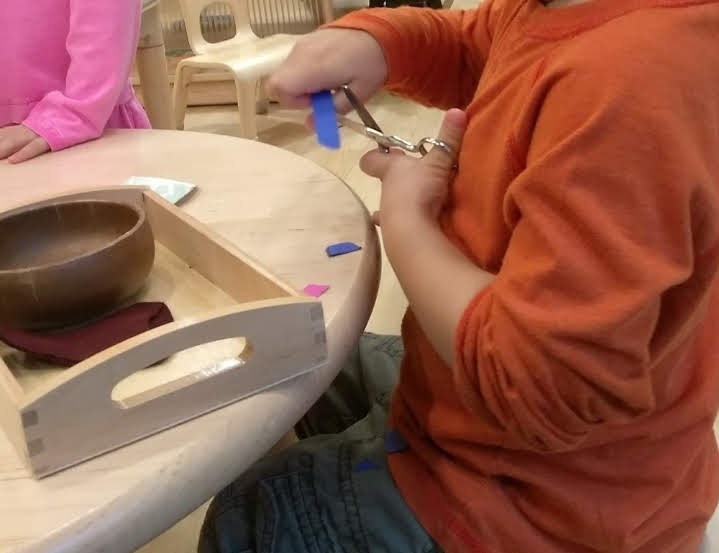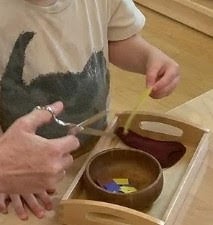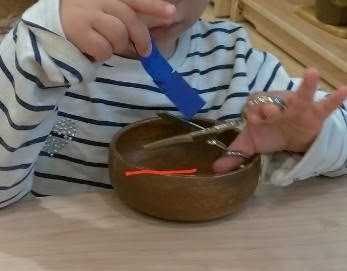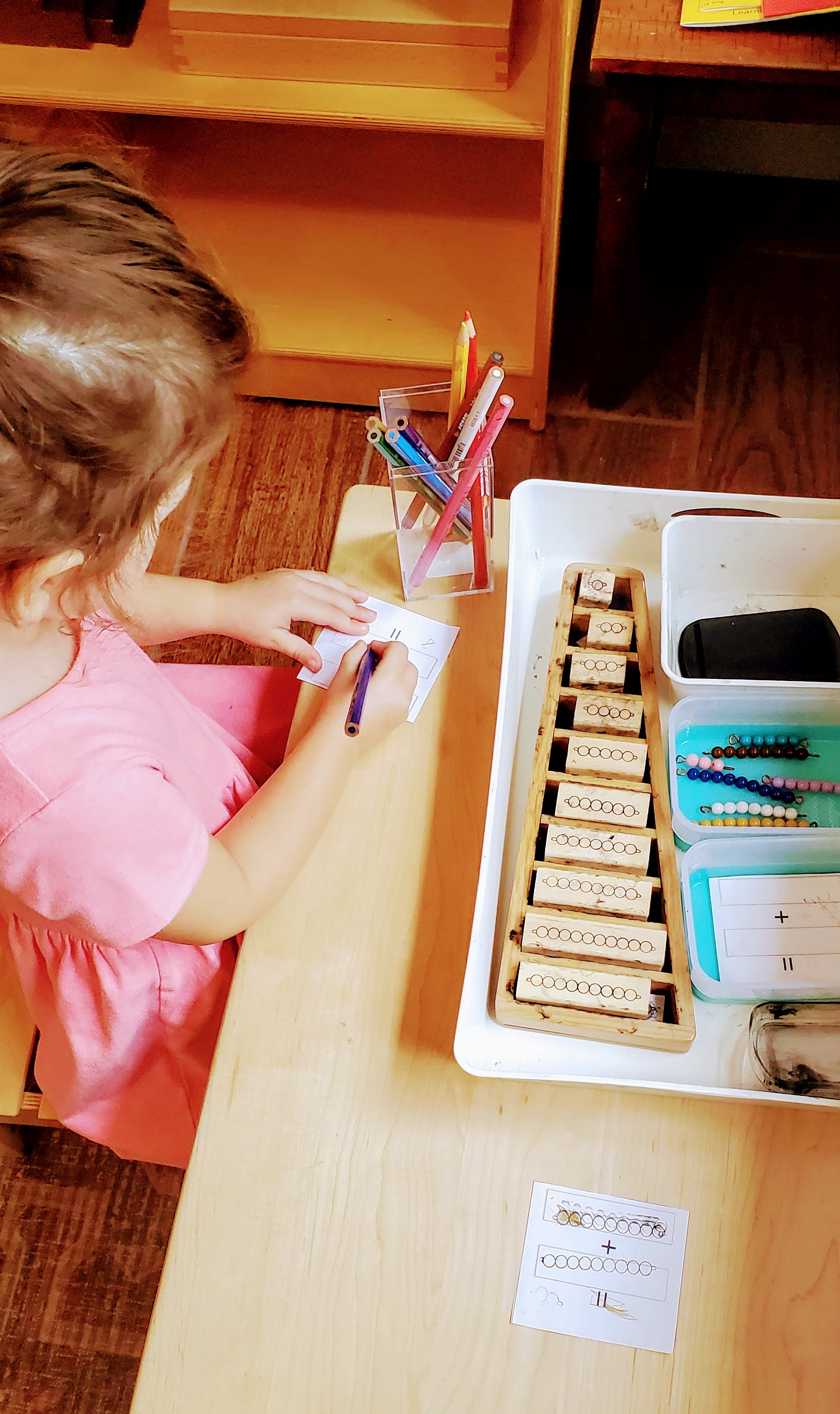Suggested Activities:
General Area
Activities for eye-hand coordination
Age
Around 18 months and older
Material Description
Basket, scissors, scissor case, card stock strips, tiny envelope (railroad paper or heavy card stock), and a letter holder box
Presentation or Usage
*The adult sits on the child’s dominant side (usually right side). This enables the child to see your hands.
- Adult demonstrates how to open and close the scissors
- Invite the child to open/close
- Adult places the paper strip into the open scissor corner
- Cut
- Repeat, “open/close” while cutting
- Hold over the basket to catch the cut paper
- Repeat twice with exaggerated movements
- Invite the child to hold the paper or scissors and repeat activity
- When finished, place the scissors back in its case
- Return the activity to the shelf
Extension- cuttings are used in a gluing collage or bedding for a hamster or guinea pig



























